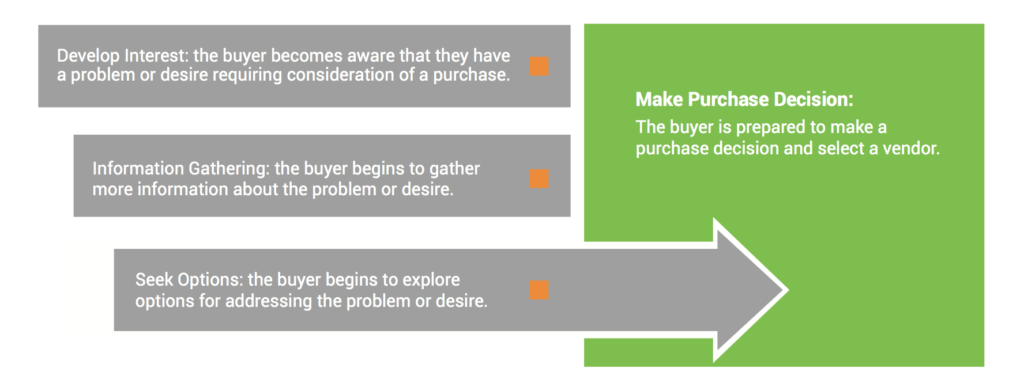In order to connect with your customers, you must first identify who they are, what they need, and what problem you can solve for them. When you understand your target audience and their needs, you can truly serve your purpose. The buyer journey explains the steps your customers experience from the time they become aware of your brand to the time they purchase and beyond. We’ve attached a fantastic article to help you better understand the buyer journey and apply it to your business. If you’re interested in a tailored strategy, then contact us for a marketing strategy session.
Never Miss an Edition of The Roundup
The Roundup is your fortnightly digital marketing tip, trick, or trend from the Somer Design Team. Sign up to never miss an edition: https://somerdesign.activehosted.com/f/7
The Article: What is the Buyer’s Journey?
Modern marketers have learned that the purchase process is a journey, and consumers advance through a process the industry has called ‘the buyer’s journey.’
The buyer’s journey is a framework that acknowledges a buyer’s progression through a research and decision process ultimately culminating in a purchase.
The Buyer’s Journey
The first thing to know about a buyer’s journey is that it can vary from one industry to the next. For example, there are differences in how B2B buyers arrive at a purchase decision and how B2C buyers do. With that in mind, let’s take a look at what the stages of the Buyer’s Journey might look like for a B2C retail company:

- Develop Interest: The buyer becomes aware that they have a problem or desire
- Information Gathering: The buyer begins to gather more information about the problem or desire.
- Seek Options: The buyer begins to explore options for addressing the problem or desire.
- Make Purchase Decision: The buyer is prepared to make a purchase decision and select a vendor.
Applying the Buyer’s Journey to Content
By applying the buyer’s journey framework to content, marketers can create content that maps to the stage of the buyer’s journey the consumer is in. Marketers can create targeted content designed to move customers through the buyer’s journey and towards a successful sale.
Let’s apply this to an example. John is a busy software engineer who rarely has time to thoroughly sweep his apartment. Let’s go with him on his buyer’s journey that leads to the Acme iRobot, a vacuum-cleaning robot.
| Stage | Content Goal |
| Develop Interest | Make John aware that dust buildup in a home can be unpleasant and can lead to health issues. |
| Information Gathering | Give John more information about the problem such as the correlation between certain health issues and homedust buildup |
| Seek Options | Make John aware of potential solutions to the problem such as scheduling a regular cleaning person or advanced technology. |
| Make Purchase Decision | Help John realize the value in both choosing an iRobot over alternative solutions, and choosing Acme over alternative vendors. |
If Acme has been successful, their content has ushered John through the buying process. First, Acme made him aware of a problem, then the solutions to the problem and finally helped him justify the purchase of their product.
To get started mapping your content to your industry’s buyer’s journey:
- Define your Buying Personas:
To understand the journey your buyers take; you must first understand who they are. - Understand the Journey Your Buyers Take:
Once you understand who your buyers are, the next step is to figure out how they progress through their individual buying process. - Map Content to the Buyer’s Journey:
Once you have your personas and the journeys worked out, the next step is to map content that addresses the challenges they face at each step in the process. The goal of the content should be to sufficiently address the buyer’s challenge such that they feel confident about moving on to the next stage in the process and help them to transition into the next stage.
View the original article.

